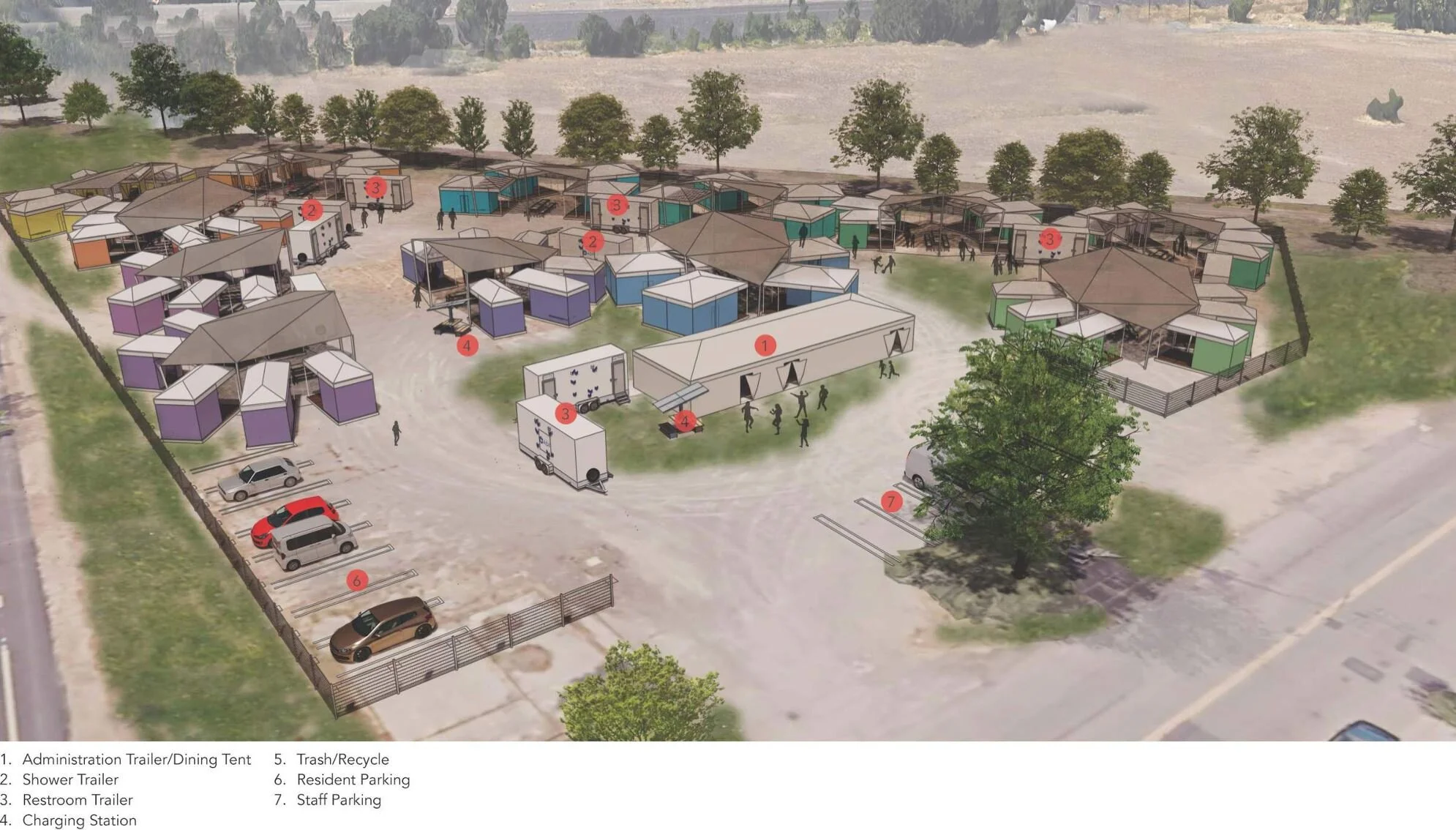City-wide homeless housing plan receives broad support as Council prepares to vote
Sacramento (Aug. 10, 2021) In the hours leading up to tonight’s vote on the City’s Master Siting Plan to Address Homelessness, support poured in from advocates for the unhoused, members of the business community, The Sacramento Bee and Sacramento residents who say bold action is urgently needed.
SacSolutions, a business coalition that includes the Sacramento Downtown Partnership, the Greater Sacramento Economic Council, chambers of commerce from throughout the city and business improvement districts, said in its letter that “we applaud the Mayor and City Council for their collective work toward developing and delivering a comprehensive shelter siting master plan for the city.”
The Sacramento Metropolitan Chamber of Commerce, the largest chamber in the region, weighed in with full-throated support. “By approving this plan tonight, you are embracing your roles as leaders to address this crisis head on, provide critical support to our most vulnerable populations and taking a major and necessary step towards advancing the economic recovery that we desperately need to keep our businesses open, our neighbors employed, and demonstrate what a world-class city is capable of when we work together to solve the most challenging problems,” read the letter signed by Chamber CEO and President Amanda Blackwood.
Former City Manager Bob Thomas called tonight’s vote “an opportunity to make a decision that will define the future of Sacramento.”
In a joint letter with management consultant Mary Egan, Thomas called the plan “a bold move and the first step in what we hope will be forward progress toward ending homelessness in our region and making all areas of Sacramento clean, safe and welcoming for all.”
Bob Erlenbusch, executive director of the Sacramento Regional Coalition to End Homelessness, wrote, “We support the boldness of the Master Plan in laying out a plan to approve 20 sites all at once; investing $100 M over two years in implementing this plan; and attempting to place nearly 10,000 of our unhoused neighbors into safe dignified emergency shelter and housing options.”
The coalition made a variety of recommendations it said would improve the plan, but nonetheless recommended Council passage.
The Sacramento Housing Alliance also supported the master plan, saying that it is “comprehensive and is bold in working to include all neighborhoods.”
The Sacramento Bee, in an editorial, urged the Council to adopt the plan, although it said more sites were still needed in some neighborhoods. “The master plan deserves broad support. It’s the most significant action Sacramento has ever taken to address homelessness,” The Bee editorial board wrote.
Another support letter came from Andy Hernandez, the president of the Woodlake Neighborhood Association, who was writing in a personal capacity. “This plan establishes a great first step on a path that, if we can get the details right, could make Sacramento a nationwide model for how to effectively and compassionately combat homelessness,” he said.
The city-wide master plan identifies strategies and sites to create more than 5,000 safe sheltering and housing opportunities for people currently experiencing homelessness. These sites are expected to serve more than 9,000 people a year as residents exit to more permanent housing.
Twenty properties, 15 of them publicly owned, are designated as priority sites for transitional housing, congregate shelters, tiny home communities, and organized campgrounds. Each of the temporary housing options will offer services designed to help people find permanent housing and exit homelessness. In addition to specific sites, the plan identifies programmatic solutions that include motel conversions, increased housing voucher usage, scattered site housing and a larger campus whose location will be determined later in 2021.
Tier 2 sites require more vetting with property owners and the community.
The siting plan is paired with a financing framework expected to total about $100 million over two years, most of it from new state and federal resources, including the 2021 state budget and the federal American Rescue Plan Act.



